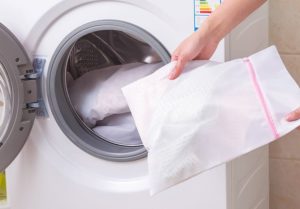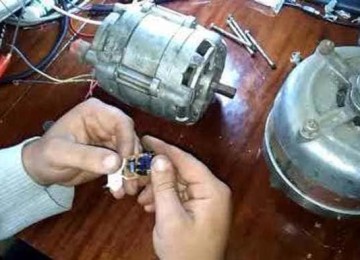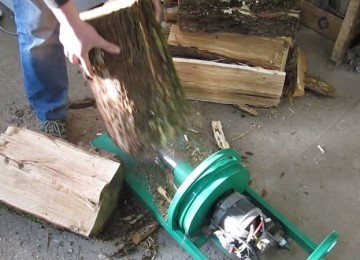 Washing machines firmly and forever entered our everyday life. These home assistants appeared quite a long time ago and have experienced many technical and technological improvements throughout their history. Technological progress does not stop, and modern washing machines are used to keep not only clothes clean, but also shoes, underwear, children's toys, jackets and other things. Machine manufacturers also develop related products - accessories that improve the convenience and quality of their use, one of which is a bag for washing clothes in a washing machine.
Washing machines firmly and forever entered our everyday life. These home assistants appeared quite a long time ago and have experienced many technical and technological improvements throughout their history. Technological progress does not stop, and modern washing machines are used to keep not only clothes clean, but also shoes, underwear, children's toys, jackets and other things. Machine manufacturers also develop related products - accessories that improve the convenience and quality of their use, one of which is a bag for washing clothes in a washing machine.
Purpose and types of laundry bags
The fabric should be mesh or perforated - the presence of holes is a prerequisite to ensure trouble-free inflow and outflow of water. The holes are made in different sizes, depending on the items for which a particular product is intended for washing.
Despite the simplicity and unpretentiousness of its purpose, you can find many varieties of this accessory on sale. They can be divided into groups according to several criteria:
- Form – cylindrical, flat, spherical, in the form of a pyramid, cube or hemisphere.
- Rigidity – framed and frameless.
- Size – from small to one bra before large down jacket.
- Clasp option – lace or zipper.
DIY washing case
Factory-made bags for washing clothes are offered for sale by manufacturers in a wide range in different price segments. With active use, high-quality products last from six months to two years. The simplest bag can be sewn with your own hands from a piece of suitable fabric - polyester, tulle, organza.
Standard sizes are 30x40, 50x70, 60x60, 150x120 cm, but you can focus on your personal needs. Sewing the product is similar to making a pillowcase, and does not cause any difficulties for experienced needlewomen. For the first experiment, you can limit yourself to a lace fastener, without sewing in a zipper.
How to use the bag
The laundry bag is a fairly simple product, and its use is intuitive. Nevertheless, there are several rules, the observance of which increases the effectiveness of its use:
- The size of the cover must match the item to be washed. Typically, the manufacturer indicates the permitted weight of clothing on the product. There is a rule - for outerwear and blankets, use a bag twice the volume of the item being washed, and small items are placed so that the cover is three-quarters full.
- Before filling the case, things are turned inside out.
- The detergent is placed as in normal washing in a special compartment of the machine; it should not be poured or poured into a bag.
- Filled bags should move freely in the drum when the machine is running - this way things can be washed better.
- After finishing washing, the cover should be dried thoroughly.
How to choose the right bag
A variety of types of bags allows you to select a product for a specific item that requires special washing conditions. Manufacturers give the following advice on choosing an accessory:
- If possible, purchase a bulk bag rather than a flat one.
- Before use, check the reliability of the zipper and the strength of the ties.
- To wash woolen and knitted items, choose round mesh covers.
- For underwear, tights, and thin items with attached decor, prefer a multi-ribbed frame product made of fine mesh.
- For washing shoes – moccasins, sneakers, sneakers, slippers, choose a square cover with large cells and foam inserts.
- For safety, thin and delicate items should be washed in drawstring bags, and shoes should be washed in zippered covers.

The benefits of using bags
You can often hear questions about what a laundry bag is needed for and whether it is needed at all. Of course, you can wash things without using covers and simply placing them in the drum of the washing machine. For durable cotton items, this option is quite acceptable. But we must take into account that when the washing machine operates, a large load is placed on the item, which can ruin the shape and the appearance of expensive clothes.
When washing, rinsing and, especially, spinning, the laundry is pressed tightly against the surface of the drum, sometimes pressed into the walls. This leads to stretching of knitwear and knitted clothes, getting the loops into the slots of the drum and causing puffs and tears. Using a cover will protect things from excessive friction, pilling, and irreversible changes in shape.
The bag also allows you to solve the problem of small things. Housewives often face a situation where items of children's clothing, underwear, handkerchiefs, etc., stick to the wall of the drum or to the cuff. Another, no less common problem is small items getting mixed up and getting inside duvet covers, pillowcases, shirts and other large items. What saves you from these troubles is a case in which the “trifles” can be washed off perfectly, and you won’t need to look for them later among other things.
The bag becomes a necessary accessory when washing expensive lingerie and elegant clothes decorated with beads, rhinestones, sequins, lace, and pleated details. When rotating in a drum, the decor may come off, and delicate fabrics may become deformed and damaged. In addition to damaging your clothes, this can cause your washing mashine to break down. Small objects can clog the drain hoses, scratch the walls of the drum, and tear the cuff. A similar problem arises when washing denim and sportswear with an abundance of metal fittings, rivets and zippers.
Modern machines Designed for the care of fabric shoes.By placing your sneakers or sneakers in a case with foam inserts, you don’t have to worry about the integrity of the hatch glass, cuff and internal mechanism of an expensive washing machine.
Thus, a simple but functional accessory allows you to extend the life of both clothing and technical devices, save material resources, and free up time for more interesting things.









